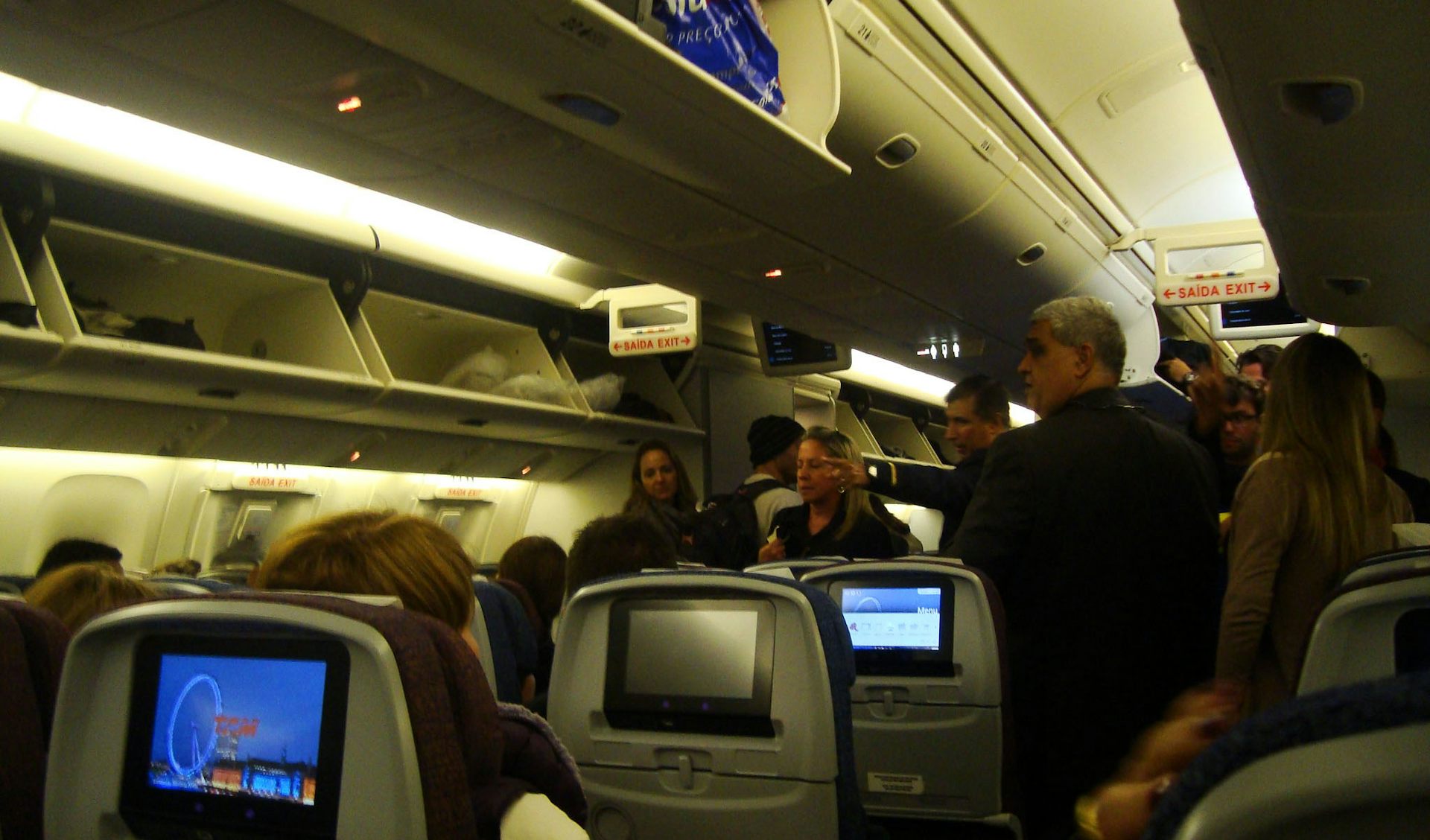Author:
Mark Thomas
(
MENAFN- The Conversation) On May 5, 2019, an Aeroflot airliner crashed at Moscow's Sheremetyevo airport, killing 41 of the 73 passengers. The plane, a Sukhoi Superjet-100, was bound for the northern city of Murmansk, but turned around after reportedly being struck lightning and losing their autopilot and radio-communications channel. Back in Moscow the aircraft landed hard and burst into flames, and more than half the passengers lost their lives. The causes of the crashare still under investigation , and in addition to the lightning strike, authorities have stated that a pilot error or technical malfunction may have occurred.
One common issue to the reports up to present is that some passengers appear to have sought totake their luggage with them , slowing the evacuation and putting additional lives at risk. While Russian media has gone so far as to single out the behaviour of asingle passenger , it's important to focus on the larger issue. Many passengers were seen carrying their luggage off the same plane, and the problem is anything but new – passengers on a British Airways flight that caught fire in Las Vegas in 2015were equally guilty .
The question we need to address then is why passengers do this and how such behaviour can be stopped.
How much is your laptop worth?
In 2017, airlines transportedmore than 4 billion passengers , with business travellers making up a significant portion of this traffic. Most of what we carry when we fly is replaceable. Credit cards and passports? Get new ones. Money? In this cashless society, few of us carry more than 100 euros. In fact, the only really important object most of us carry is a computer, and a greater and greater percentage of our data is now being backed up on the cloud. Amuch-cited 2008 studyindicated that up to 12,000 laptops were lost weekly in US airports, and one way or another, they get replaced – there's no need to put your or someone else's life at risk during an emergency in order to save a computer.
Yet even in the most extreme situations, the temptation to grab one's backpack is strong. This leads us to a second problem: Many wrongly assume that this would have no impact on the evacuation. Watch any video of a simulated emergency evacuation, however, and you will quickly realise that they requiremilitary-style coordination . Most passengers won't realise this because they have never seen such a simulation, so they're incapable of understanding what would be required of them. Noble prize-winning economists such asDaniel KahnemanandRichard Thalerhave adequately demonstrated that humans are very poor at conceptualising such problems and judging risks.

Should an emergency occur, airliner staff have at most a second per passenger to evacuate an entire plane.
Juan Pablo Donoso/Flickr ,CC BY
To fully comprehend the problem airline staff face when evacuating an aircraft, you need to do a bit of math. Industry norms recommend that within 90 seconds, all passengers must disembark – this is a maximum. Video footage of the Moscow flight suggests the Aeroflot staff had less than 60 seconds if they wished to reduce the number of fatalities. That gave staff less than one second per passenger to disembark the 73 passengers and 5 crew members. The most commonly used planes for short- or medium-haul flights, the Airbus 320 and Boeing 737, can have as many as 220 passengers. Even allowing for the generous 90 seconds, that gives airline staff only 0.40 seconds to disembark each passenger. In other words, a two-second delay could lead to the death of five people. Suddenly, grabbing your luggage doesn't seem quite so innocent.
Educate or legislate
Faced with the seeming inability of passengers to do what is necessary, there are only two solutions: educate or legislate. Education means giving passengers clear rules. Current airline security videos give abstract guidelines protecting passengers from the harsh reality of what is required in an emergency. Actually, showing a short video of a simulated evacuation would be a good start, enabling passengers to visualise what they should do. Equally, telling them the impact of a two-second delay in clear and unequivocal terms might also have a positive impact. Perhaps this isn't the type of message you want to hear as you are just about to start a vacation, but isn't a little temporary discomfort worth improving everyone's chances of surviving a crash?
Given the high stakes and our resistance to making the right decisions, education in itself is not enough. For example, a fine on the order of 20,000 euros would people's attention, as would the potential of prison time. This is needs to be enforced for any passenger leaving a plane in an emergency with a suitcase, backpack or even small handbag. In short, anyone seen carrying a non-inanimate object that could delay the evacuation by a fraction of a second. That fraction could lead to the death of a fellow passenger. It is your luggage or someone else's life.
Ready, set, go! And leave that laptop behind.
Airlines
Russia
Nudge theory
Risk
Airline safety
The Conversation France
Moscow
Airplane crash
MENAFN2005201901990000ID1098547557
Legal Disclaimer:
MENAFN provides the information “as is” without warranty of any kind. We do not accept any responsibility or liability for the accuracy, content, images, videos, licenses, completeness, legality, or reliability of the information contained in this article. If you have any complaints or copyright issues related to this article, kindly contact the provider above.